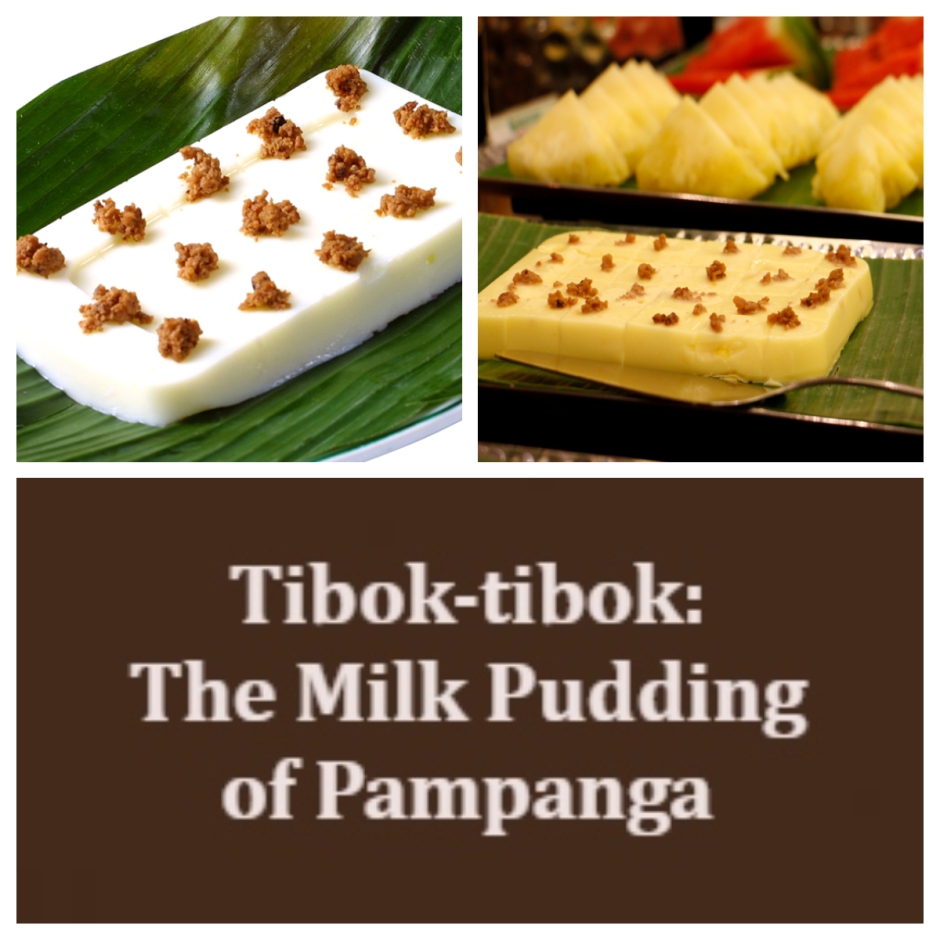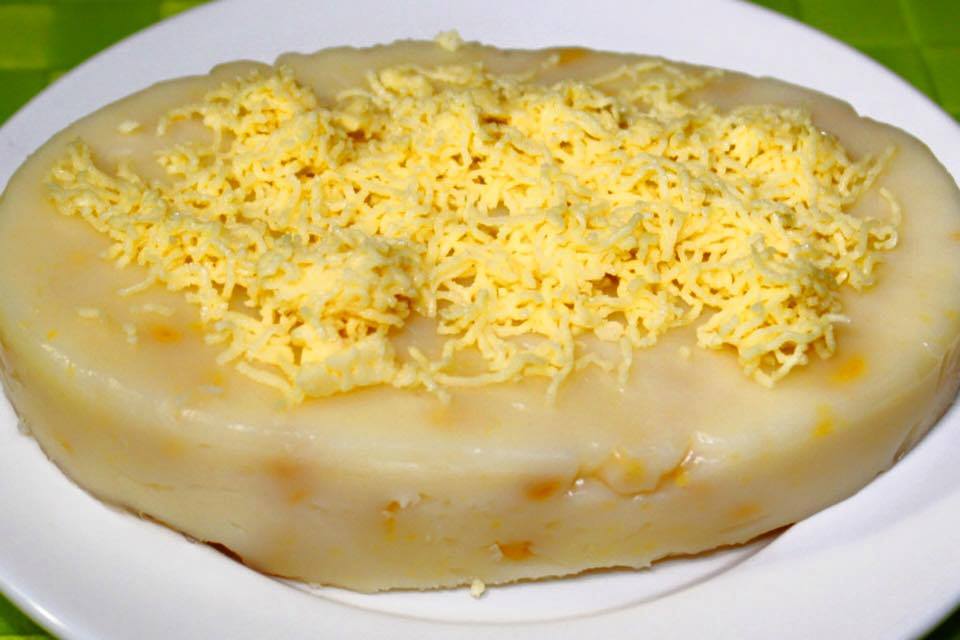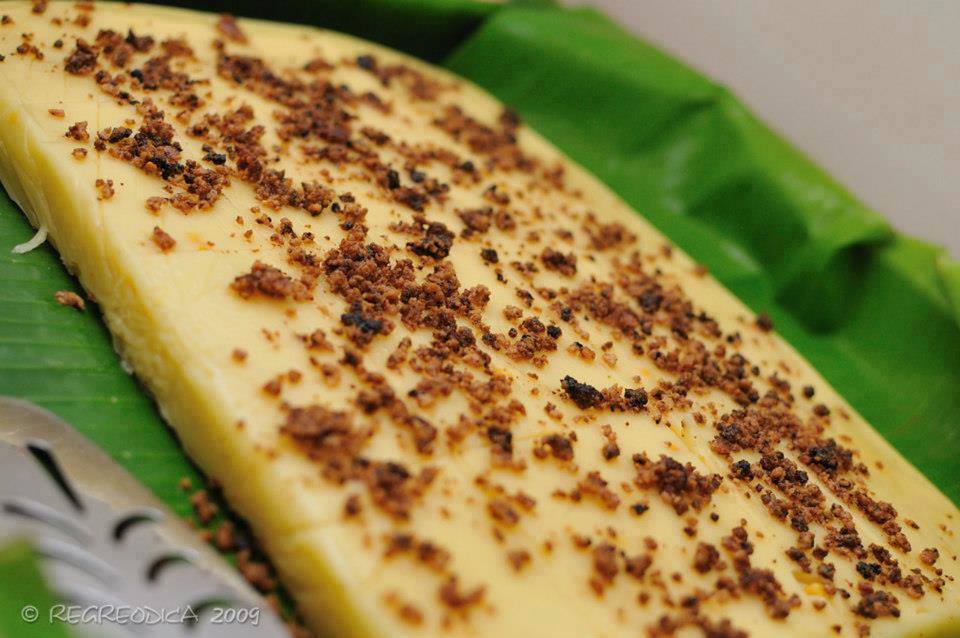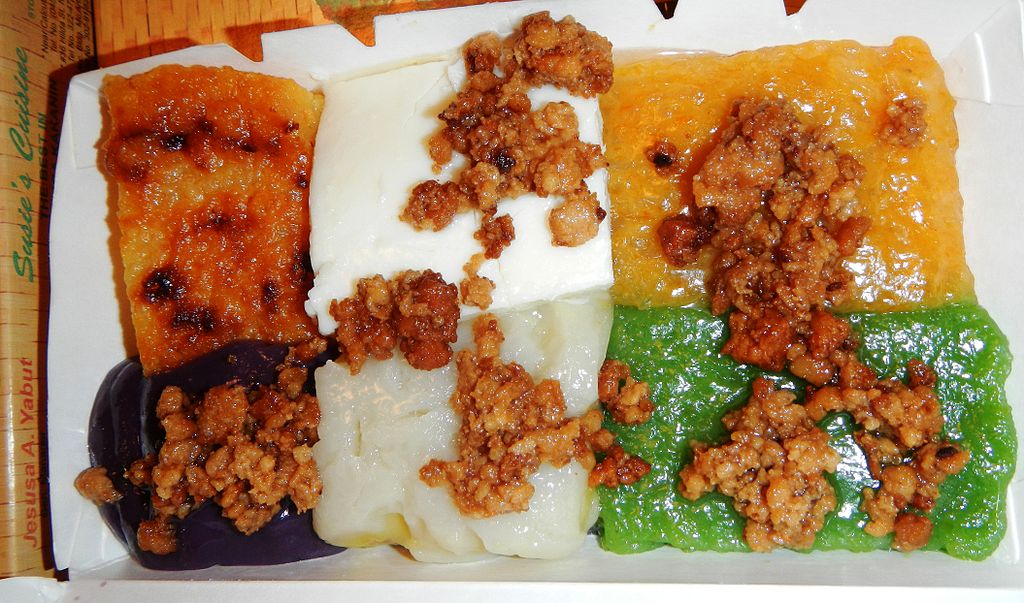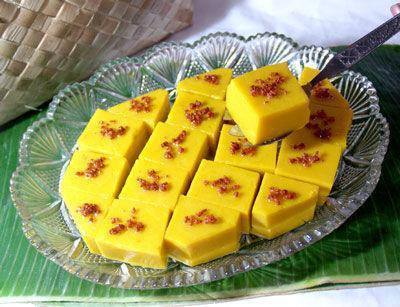Dear Foreign Seniors, Tita S will share with you an interesting dessert from the Philippines.
1.Tibok-tibok, or carabao milk pudding, is an authentic Filipino dessert pudding made primarily from carabao milk and galapong (ground glutinous rice soaked overnight), and topped with latik (browned coconut cream curds). It is also served as a snack.
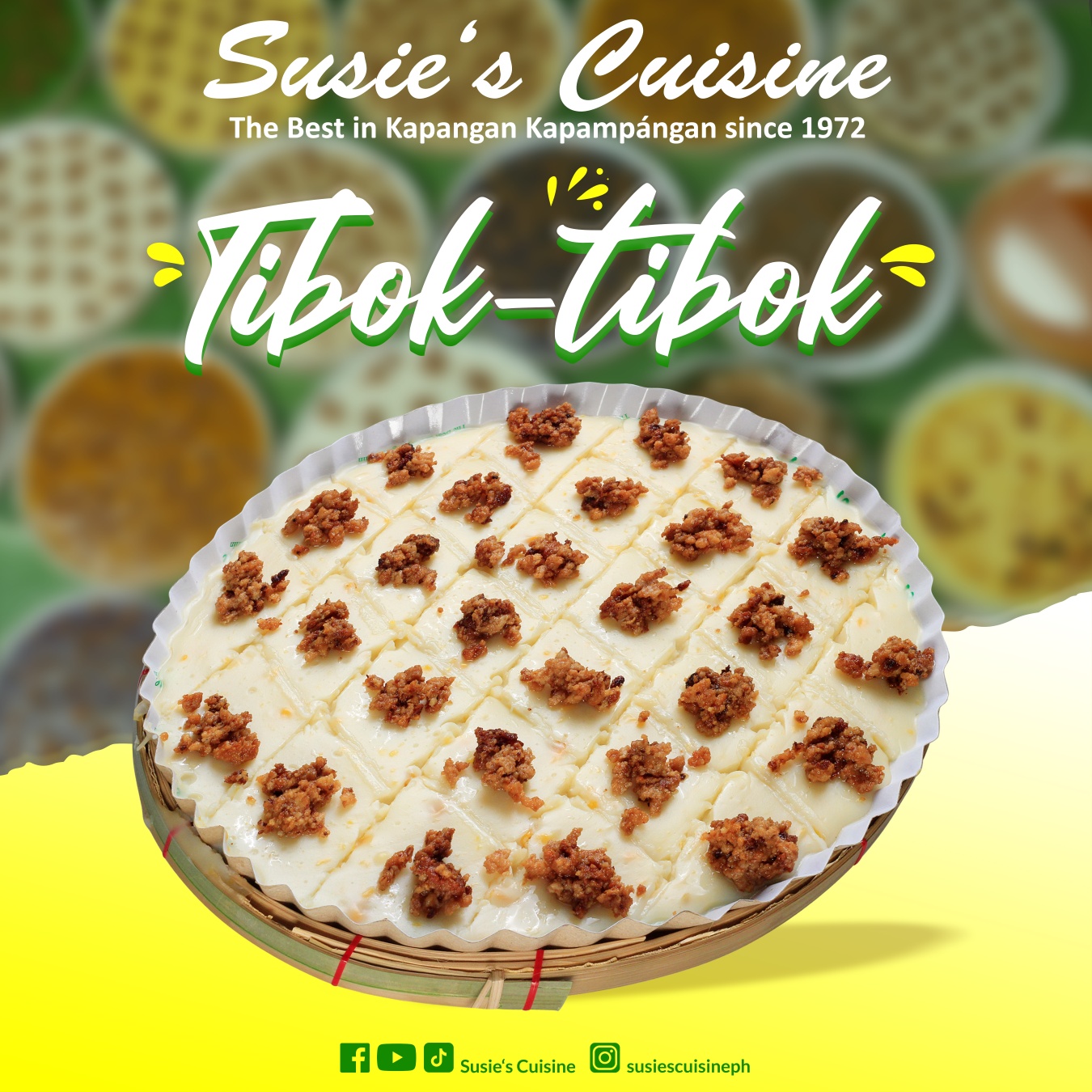
Tibok-tibok, Susie’s Cuisine, Pampanga – Photo source: https://www.facebook.com/susiescuisineph/photos/2975444322669380
2. It originated in the province1 of Pampanga2, in the Central Luzon3 region4, in the island group of Luzon5, Philippines. It is also popular in the province of Cagayan6.
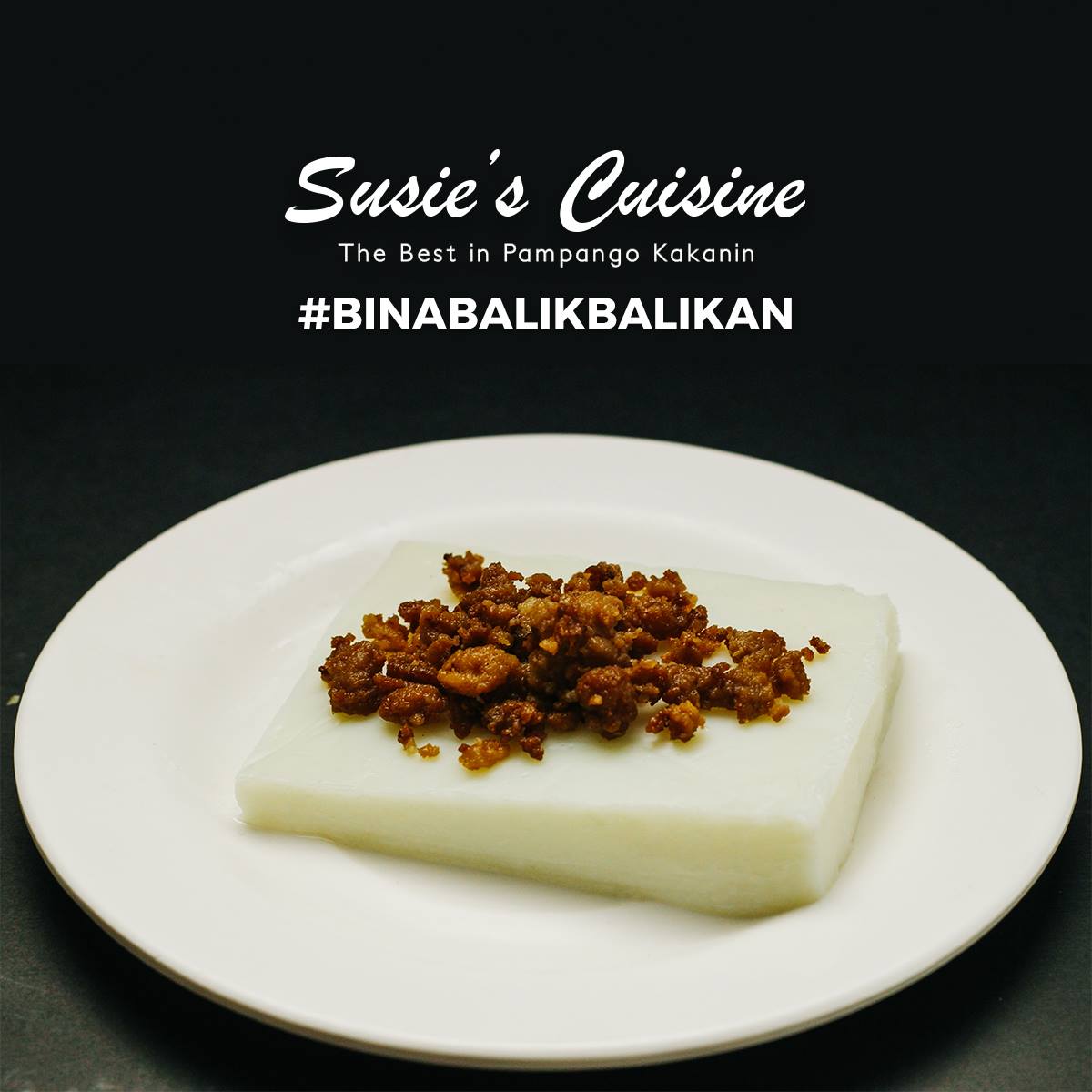
Sliced tibok-tibok, Susie’s Cuisine, Pampanga – Photo source: https://www.facebook.com/susiescuisineph/photos/a.1735440103336481/1758804994333325
3. The carabao milk is traditionally mixed with a small amount of galapong and flavored with a small amount of white sugar and dayap (key lime) zest.
Whole fat cow’s milk can replace carabao milk in areas where the latter is not available. Just add a pinch of salt to the former since the latter has a slightly salty taste. Remember, carabao’s milk has 100% more fat content than cow’s milk, so it makes a thicker and creamier pudding.
Rice flour or corn starch can substitute for galapong. If you do not have rice flour, you can make it at home by grinding rice using a food processor until powdery. If you use corn starch, the result is a firmer and less silky textured tibok-tibok.
The mixture is simmered at low heat, while stirring continuously until the mixture thickens. It is immediately poured into a greased flat banana leaf-lined pan and allowed to cool and completely set.
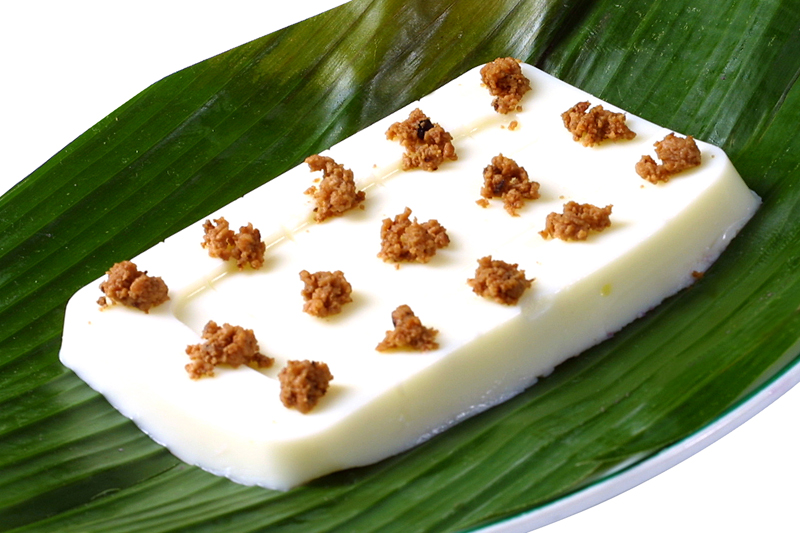
Tibok-tibok, Cabalen – Photo source: https://www.cabalen.ph/desserts
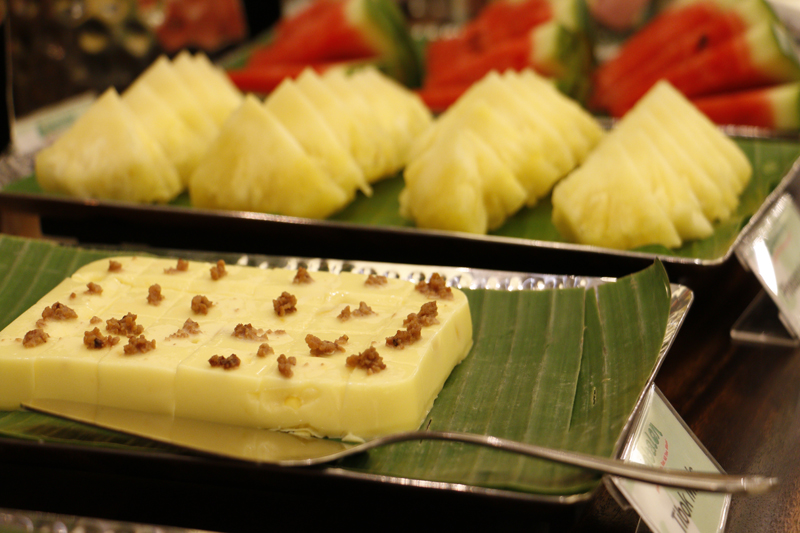
Tibok Mais, a variation with corn at Cabalen – Photo source: https://www.cabalen.ph/desserts
It is easier to cut when this pudding has already cooled and set. It is usually cut into square or diamond-shaped slices. You can also refrigerate it to be fully set, before generously adding the latik as topping. It can be served cold or at room temperature.
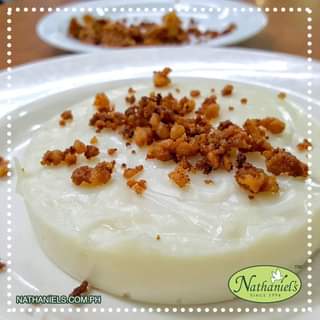
Sliced tibok-tibok, Nathaniel’s – Photo source: https://d.facebook.com/NathanielsBakeshop/photos/a.10150298239407022/10155689781382022/?type=3&__tn__=EH-R
It can be stored in airtight containers covered with a plastic film to prevent it from drying out. Be sure to refrigerate it, not later than 2 hours after cooling, or it might spoil. It can keep for about 3 days in the refrigerator.
View this 3:18 video: https://www.youtube.com/watch?v=H1usRvs3tfg.
4. This dessert is creamy white, has a soft, smooth, jelly-like texture, and has a creamy, delicately sweet, and slightly salty flavor.
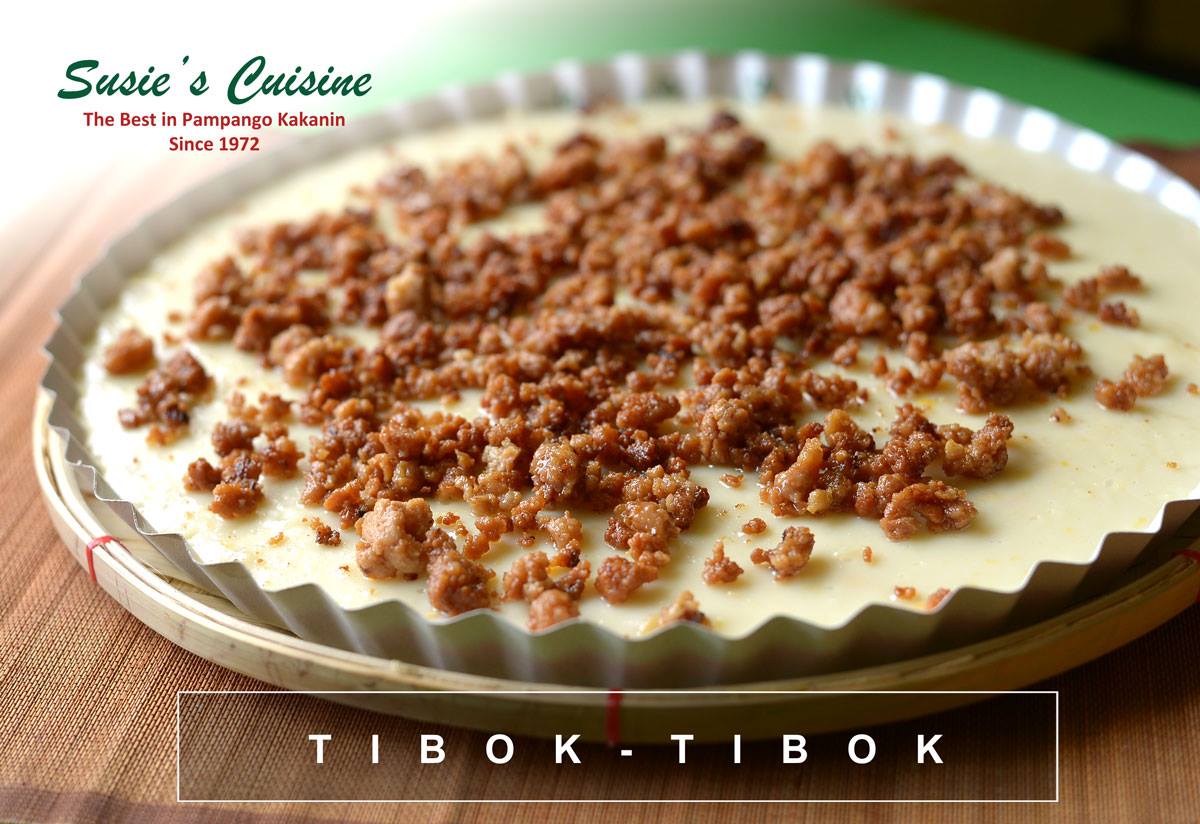
Tibok-tibok, Susie’s Cuisine – Photo source: https://www.facebook.com/susiescuisineph/posts/tibok-tibok-is-all-about-love-its-the-sound-your-heart-makes-masarap-din-itong-k/2006522896228199/
5. Tibok-tibok literally means “[like a] heartbeat”. Why? During its preparation, when the mixture gets to be reduced to a firm consistency, the bubbles barely break the surface and seem to be pulsating. When this happens, the dish is done!
6. It is very similar to another Filipino snack or dessert, the maja blanca, which is a coconut pudding, basically made of coconut milk, cornstarch and sugar. Thus, some call tibok-tibok as the Maja Blanca of Pampanga2.
See my post about this Filipino delight: SAVORING MAJA BLANCA
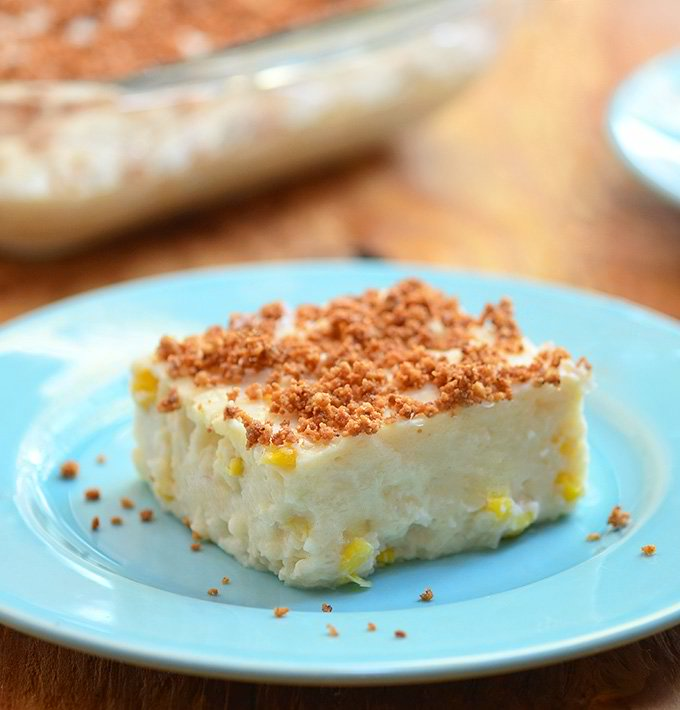
Maja Blanca – Photo source: kawalingpinoy, CC BY-SA 4.0, created 22 February 2017, https://en.wikipedia.org/wiki/Maja_blanca#/media/File:Majablanca.jpg
The information was obtained from https://www.yummy.ph/lessons/cooking/pampanga-tibok-tibok-a00249-20181215 and the Wikipedia page “Tibok-tibok”7.
The pictures featured in the cover picture-collage were obtained from https://www.cabalen.ph/desserts.
This is not a sponsored post. I just want my readers to know more about Philippine delicacies.
Did you find this post informative? I would like to hear your comment/s regarding tibok-tibok.
See other interesting posts in this category (Pinoy Delights) and other categories – SCapades and Smart Travelers – Foreign Travelers Ask, Now You Know, and Say, Say, Say. Happy reading, and I hope that you will appreciate what I shared and some of the featured destinations will be part of your future travel plans!
Remember to share this post with your Facebook friends, and to follow me by clicking on the bottom right corner of your device. And, do not forget to like this post. Thank you.
– – – – – – – – – – – – – – – – – – – – – – – – – –
The following terms are defined for interested readers, especially those with “Senior-Moments”, those not familiar with Filipino terms, and those too busy or lazy to Google such terms:
1A province is the primary administrative and political division in the Philippines. It is the second-level administrative sub-division of a region4. There are 81 provinces (called lalawigan) in the Philippines. Each province is governed by an elected legislature called the Sangguniang Panlalawigan, and by an elected governor. Remember, a province in the Philippines is divided into cities and towns, which in turn, are divided into barangays8, formerly called barrios. The information was obtained from Wikipedia page “Provinces of the Philippines.”9
See a related post: Foreign Seniors Ask: WHAT ARE PROVINCES IN THE PHILIPPINES?
2Pampanga is a province1 lying on the northern shore of Manila Bay, in the Central Luzon3 region4 (Region III) of the Philippines. It is bordered by the provinces of Tarlac to the north, Zambales to the west, Bataan to the southwest, Nueva Ecija to the northeast, Bulacan to the east, and Manila Bay to the central south. Its capital is the City of San Fernando. The information was obtained from the Wikipedia page “Pampanga”.10
This province is known as the Culinary Capital of the Philippines because of its delicious cuisine that features dishes like: sisig, tocino, nasing biringyi (chicken saffron rice), morcon, menudo, caldereta, estofado, embotido, asado, lengua, lechon, chicharon, afritada, bringhi (paella). The information was obtained from the Wikipedia page “Kapampangan cuisine”.11
3Region III, called the Central Luzon Region, is a Philippine region4 located in the island group of Luzon5, with 7 provinces: Aurora, Bataan, Bulacan, Nueva Ecija, Pampanga2, Tarlac and Zambales. It has three cities, all located in the province of Pampanga: Angeles (a 1st class12 highly urbanized city13), Mabalacat (a 3rd class14 component city15) and San Fernando (a 1st class component city and the regional center). It is dubbed as “The Rice Granary of the Philippines” because this region contains the largest plain in the country and produces most of the country’s rice supply. The information was obtained from the Wikipedia page “Central Luzon”.16
4A region is the first-order administrative division in the Philippines. There are 17 regions in the Philippines, based on geographical, cultural and ethnological characteristics. It is further subdivided in provinces1, composed of cities and towns, which in turn, are divided into barangays8 (district or village). The information was obtained from the Wikipedia page “Regions of the Philippines.”17
See a related post: Foreign Seniors Ask: WHAT ARE THE REGIONS OF THE PHILIPPINES?
5Luzon is the largest and most populous island in the Philippines. It is ranked the 15th largest island in the world by land area, at 109,964.9 sq.km. (42,457.7 sq mi). It is the northern portion, among the three primary island groups in the Philippine archipelago, with Visayas at the center, and Mindanao at the southern part. It is the economic and political center of the country, with Manila as the capital city, and Quezon City as the country’s most populous city. It has a population of 53 million, as of 2015, representing 52.5% of the country’s total population, and the fourth most populous island in the world. The name Luzon comes from the Tagalog word lusong, a large wooden mortar used to de-husk rice. The information was obtained from the Wikipedia page “Luzon”.18
6Cagayan is a province1 located in the Cagayan Valley region, in the northeastern tip of Luzon5, in the Philippines. It has an area of 9,295.75 sq. km. (3,589.11 sq. mi.)
It was founded on June 29, 1583 and was one of the early provinces that existed during the Spanish colonial period (1565-1898). Its capital is Tuguegarao. The information was obtained from the Wikipedia page “Cagayan”.19
7“Tibok-tibok,” accessed January 29, 2019, https://en.wikipedia.org/wiki/Tibok-tibok
8A barangay is the smallest administrative division in the Philippines. It is headed by a barangay captain, aided by a Sangguniang Barangay (Barangay Council). It is the native Filipino term for a village. It was formerly called a barrio. In a metropolitan area, a barangay is an inner-city neighborhood, a suburb, or a suburban neighborhood. The word barangay originated from the term “balangay”, a kind of boat used by a group of Austronesian people who migrated to the Philippines. A number of barangays grouped together is called a district. The information was obtained from Wikipedia page “Barangay.”20
9“Provinces of the Philippines,” accessed July 17, 2018, https://en.wikipedia.org/wiki/Provinces_of_the_Philippines
10“Pampanga” accessed April 2, 2018, https://en.wikipedia.org/wiki/Pampanga
11“Kakampangan cuisine” accessed April 2, 2018, https://en.wikipedia.org/wiki/Kapampangan_cuisine
12A first class city in the Philippines has an average annual income for a 4-year period of at least 500 million pesos, according to the Wikipedia page “Cities of the Philippines.”21
13A highly urbanized city is a type of city in the Philippines with a minimum population of 200,000 as certified by the Philippine Statistics Authority (PSA), and with the latest annual income of at least 50 million pesos. There are currently 33 such cities in the Philippines. The information was obtained from the Wikipedia page “Cities of the Philippines.”21
See a related post: Foreign Seniors Ask: HOW MANY CITIES ARE THERE IN THE PHILIPPINES?
14A third class city in the Philippines has an average annual income for a 4-year period of 240 million, but less than 320 million pesos, according to the Wikipedia page “Cities of the Philippines.”21.
15A component city is a type of city in the Philippines which does not meet the requirements of a highly urbanized city13. It is under the jurisdiction of a province1. If such a city is located along the boundaries of 2 or more provinces, it shall be considered part of the province of which it used to be a town (locally called a municipality). The information was obtained from Wikipedia page “Cities of the Philippines.”21
16“Central Luzon,” accessed April 2, 2018, https://en.wikipedia.org/wiki/Central_Luzon
17“Regions of the Philippines,” accessed July 17, 2018, https://en.wikipedia.org/wiki/Regions_of_the_Philippines
18“Luzon,” accessed April 2, 2018, https://en.wikipedia.org/wiki/Luzon
19“Cagayan,” accessed January 29, 2019, https://en.wikipedia.org/wiki/Cagayan
20“Barangay,” accessed January 29, 2019, https://en.wikipedia.org/wiki/Barangay
21“Cities of the Philippines,” accessed March 17, 2018, https://en.wikipedia.org/wiki/Cities_of_the_Philippines

